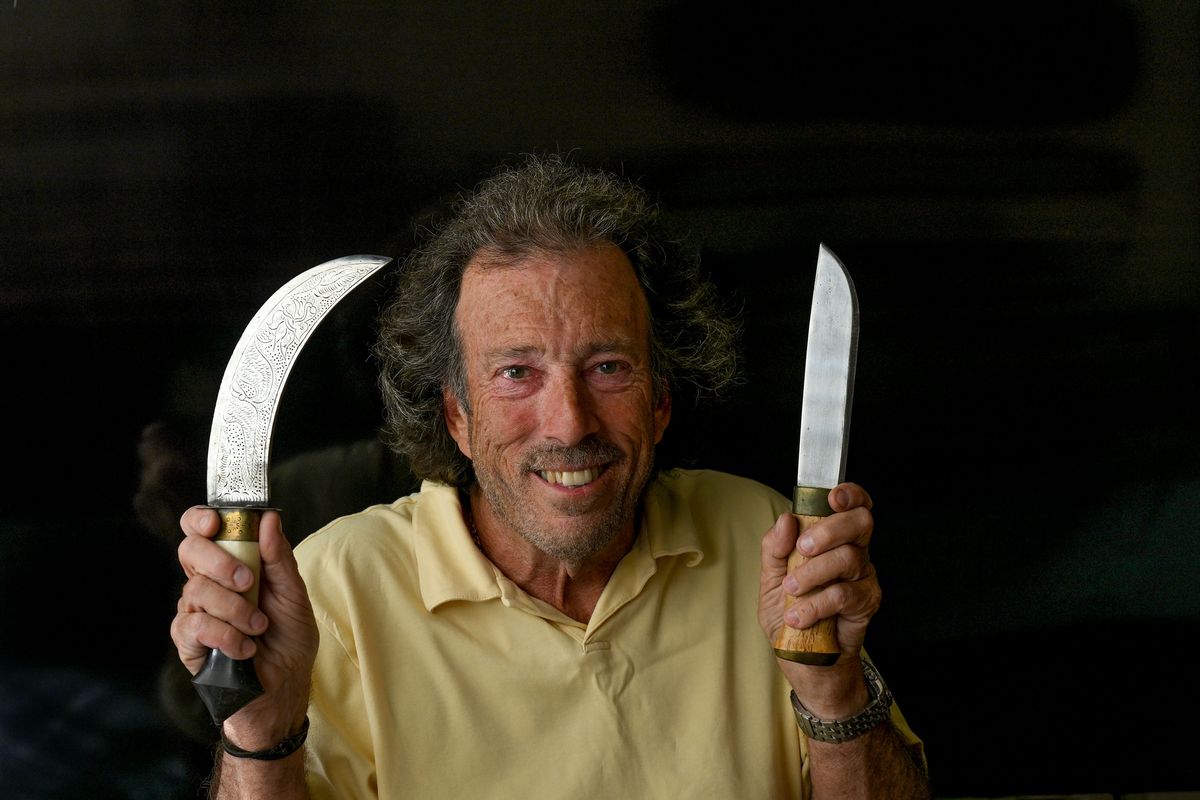The Collector: Cutting through the memories

From the arctic chill of Lapland to the steamy jungles of Cambodia, Joe Pallaria has visited 83 countries, many during his 32-year military career.
Though he’s retired, he’s still exploring the world.
“My goal is to go to 100 countries,” he said.
Like many travelers, he picked up souvenirs along the way, including a collection of knives.
It began in 1979 when he was deployed with the Marine Corps to Lapland in northern Norway.
Pallaria had already done a stint as a Navy corpsman.
“I started going to night school and got bored, so I joined the Marines,” he said. “It was the Cold War, and I was deployed twice to northern Norway.”
For him, it was literally a cold war.
“It was always about 0 degrees,” Pallaria said. “We were 200 miles above the Arctic Circle.”
He bought his first knife near Tromso, Norway.
The birch-handled blade encased in an embossed leather sheath was used by the locals to skin reindeer.
Like all the items in his collection, its story captured his imagination.
“It could have belonged to Santa or one of those elves,” he said.
A less romantic story lies behind an Iraqi bayonet. By that time, Pallaria had transitioned to the Air Force.
“While I was deployed in Turkey, a fellow airman came back from Baghdad with two of these, and I got one.”
The bayonet also doubles as a wire-cutter.
Two smaller, but equally lethal items were smuggled out of Europe on military aircraft. An Italian switchblade (or automatic knife) features a handle that resembles mother-of-pearl, while a black blade from Germany has a pebbled finish.
“It doesn’t show fingerprints,” Pallaria said.
A curved blade attached to a whale’s tooth is tinier but less deadly.
“It’s from Alaska and was used to skin seals,” he said.
Other items also had practical purposes.
A rice knife from Cambodia features a gracefully curved side used to gather a handful of rice plants. Then with a quick turn of the wrist, the harvester cut the sheaf with the iron blade on the opposite side.
“It was probably used by a Cambodian farmer,” he said.
Pallaria even has his grandfather’s scythe. He turned it slowly in his hands.
“He used this to cut weeds in the backyard,” he said.
While traveling in Laos in 2019, he discovered his most recent acquisition, a slim blade with a wooden handle and sheath.
“I refinished the wooden sheath,” he said.
The most beautiful knives in his collection were likely for ceremonial use.
A curved blade purchased at an open-air market in Eastern Turkey features an exquisite sheath with brass and mother-of-pearl inlay.
When stationed in Japan, Pallaria took his family to New Delhi.
There he found a silver knife with an intricately designed silver scabbard.
As he looked for additions to his collection, he knew what he wanted.
“I wanted the exotic stuff,” he said. “I looked for diversity and unusual stuff.”
For example, he held up a knife with a surprising handle.
“It looks like a mermaid’s tail,” Pallaria said.
With seven deployments during his lengthy military career, his collection reminds him of the places he traveled to and lived , and of the people he met across the world.
He marvels at the variety of craftsmanship he discovered from Northern Europe to the Middle East to Central Asia. Pallaria appreciates the unique work of each knifesmith.
“For some of these people it’s not just a knife, it’s a work of art,” he said.
Editor’s note: This story was updated to correct the temperature in the quote about being above the Arctic Circle.